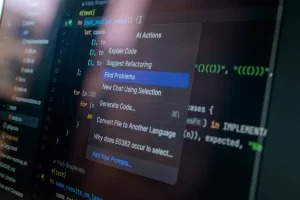The Secret World of OpenAI’s Internal Agents

Ever wonder what’s brewing behind the curtains at OpenAI? Well, buckle up, because it involves secretive AI agents and competition from fierce rivals. Some recent leaks shed light on fascinating developments happening at OpenAI.
The competition is heating up as OpenAI goes head-to-head with Anthropic in the realm of AI coding. What are the mysterious projects underway, and how do they promise to revolutionize software development? Let’s dive into the details.
OpenAI vs. Anthropic: The AI Heavyweights
In recent developments, OpenAI has been fiercely competing with Anthropic in the AI coding space. They’re striving to enhance their tools for software development and make coding easier for users. But Anthropic isn’t trailing behind.
OpenAI’s efforts to improve coding tools stem from their rivalry with Anthropic. Both are racing to create AI that can automate complex software engineering tasks, promising to save users hours, if not days, of work.
Anthropic has released a new software mimicking human interactions on computers. This intensifies the competition, leaving OpenAI scrambling to catch up. However, despite the heat, OpenAI continues its secretive projects, hoping to stay ahead of the curve.
Secret AI Projects and Hidden Tools
OpenAI is believed to have a secret internal product capable of handling software engineering tasks. This tool can write and execute code for complex applications, a game-changer in the tech world.
Rumors abound about OpenAI’s internal AI agents, set to revolutionize coding. Though details are scant, hints from insiders suggest it’s a powerful tool in development that can automate coding tasks and boost productivity.
With OpenAI keeping mum on these developments, the tech community is abuzz with speculation. There’s no clear release date for these tools, but the stir they’re causing is undeniable, suggesting significant forward moves.
Anthropic’s Surprising Edge
There’s chatter that Anthropic may have an edge over OpenAI. They’re reportedly leading in AI models’ coding abilities, a fact that has caught many by surprise.
While OpenAI’s GPT-4 is a known entity, Anthropic’s Claude model is reportedly boosting developer productivity. This has led to discussions within Anthropic about potentially reducing hires due to increased efficiency.
Anthropic aims to reach $1 billion in annual revenue by 2024, aided by Claude’s efficiency. This could spell trouble for OpenAI, as it grapples with staying competitive in a rapidly evolving field.
Internal Research Assistants
OpenAI’s internal research assistant stands as a testament to their technological prowess. This tool helps researchers generate code faster, aiding in AI model experiments.
Reports suggest this internal tool is popular within OpenAI, though there’s no indication it will be publicly released. Its existence highlights the advanced stage of AI development at OpenAI.
Could this research assistant hint at OpenAI’s future products? It seems likely, as the capabilities of AI in assisting human researchers continue to grow, pushing the boundaries of innovation.
Rival Products and the Road Ahead
New AI products from OpenAI could threaten existing customers who offer coding assistance. As OpenAI continues its development, overlaps in product offerings are becoming more apparent.
These potential overlaps pose significant challenges for existing AI coding assistants. OpenAI’s forthcoming products could unsettle its competitors and redefine the landscape of AI-driven software engineering.
Demonstrations of AI Potential
OpenAI recently showcased its AI’s ability to perform tasks like ordering food. This demonstration, featuring a model capable of mimicking complex human interactions, points to a future of AI autonomy.
Seeing these AI models in action is both exciting and daunting. Their ability to perform tasks with human-like precision is a testament to how far technology has come.
As AI models continue to improve, their integration into everyday tasks seems inevitable. OpenAI’s demos provide a glimpse into a future where machines take on tasks, challenging the norm.
Strategic Developments and Future Plans
OpenAI is also focusing on developing a new ChatGPT interface, Canvas, aimed at simplifying coding tasks. This interface promises to enhance users’ experience and productivity.
Internal demos have shown that OpenAI’s agents can already perform various tasks, hinting at their advanced capabilities. This step is crucial for the future of AI integration into everyday life.
With these capabilities, OpenAI is poised to redefine AI interaction, setting the stage for more ambitious developments. Their strategic approach to AI agents marks a significant step toward the future.
The Long Game of AI Development
OpenAI’s commitment to developing autonomous agents signifies their long-term vision. The strides made so far show that the realm of AI is expanding at a rapid pace.
Though these developments are groundbreaking, OpenAI carefully considers public release strategies. This cautious approach ensures they maintain a competitive edge and align with market needs.
In Conclusion: The Calm Before the Storm
OpenAI’s secret projects hint at a future where AI tasks will be seamlessly integrated into our lives. This technological leap forward promises to redefine how we interact with machines.
What’s on the horizon for OpenAI and its competitors? Their current projects suggest a future brimming with possibilities and challenges.
As OpenAI and Anthropic vie for dominance, the tech world watches closely, eager for the next leap in AI innovation.








